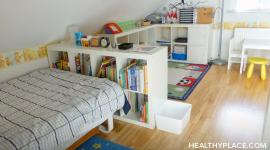Disciplining Your ADHD Child

When disciplining a child with ADHD, what works? A mother of two ADHD children talks about behavior management through the use of consequences.
Being the parent of an ADHD child can be very stressful. I happen to be a single ADHD mom to three daughters and 2 of them have it as well. I can tell you from personal experience that I never in a million years thought my stress level could get so high. As your life spins out of control for the umpteenth time you find that help is hard to find from friends and family. They look at you and your children like their behavior is all your fault. It's pretty hard to convince someone that hasn't walked a mile in your shoes just what is really going on. So I won't even try anymore to explain it to a non-ADDer. I will tell you what I have learned though.
I had a unique chance to see my theory work just this week. One of my children had an issue that needed immediate resolution. The school met with me to explain their rules and consequences and that they would start using it with her. They called me a week later to see what else they could do since their method wasn't working. I explained the fact that purely negative consequences don't work with my daughter and she needed a positive consequence to go along with it. It worked IMMEDIATELY.
Why it worked:
Behavior management through the use of consequences is an important part of the treatment program when working with children with ADHD. We change our behavior according to the consequences that result. If I do something and as a consequence, I get hurt, the chances are that I will stop doing it. If I do something that brings satisfaction, the chances are I will keep doing it.
If we do not experience consequences for our behavior we are unable to make effective changes. We learn behaviors best when consequences are clearly related to specific behavior.
For most children, abstract rewards work very well and brief reprimands do the job. However, for children with ADHD, specific and tangible consequences are needed to encourage positive behavior in order to change disruptive or non-compliant behavior.
While talking may be effective with many children, for children with ADHD "doing" provides better results than "talking".
Two key factors in using consequences are Consistency and Timing. Rules should be firm and consistently enforced. Consequences should occur as soon as possible after the behavior you are attempting to change.
Examples of Positive Consequences:
- Special treat for dinner
- Special time with father and/or mother
- An additional story at bedtime
- Specific tangible reward (small toy)
- Take him/her places
- Rent a movie to watch together
- Let him/her select the menu for the next lunch or dinner
- A star or check is earned to be 'cashed' in later for a reward
Examples of Negative Consequences
- Missing a favorite TV show
- Time-out for a short period of time (2-5 minutes)
- Removal of some privileges
- TV is off earlier than usual
- Go to bed earlier
Ineffective Consequences
- Endless groundings
- Consequences without warning
- Inconsistent consequences (given one day but not the next)
About the author: Megan Dlugokinski is an ADD/ADHD coach and was diagnosed with ADHD in 2003. She is a single mother of three young daughters.
APA Reference
Staff, H.
(2021, December 20). Disciplining Your ADHD Child, HealthyPlace. Retrieved
on 2024, June 20 from https://www.healthyplace.com/adhd/children-behavioral-issues/disciplining-your-adhd-child



